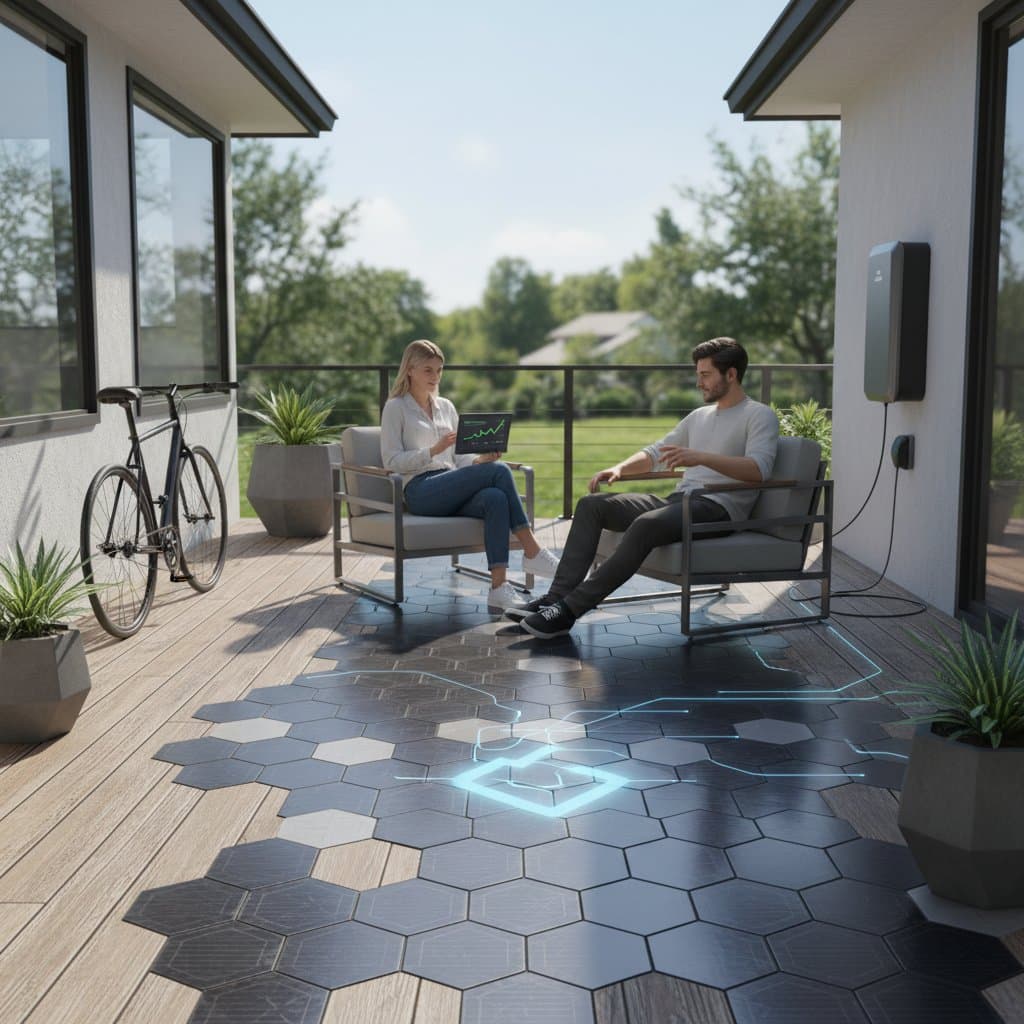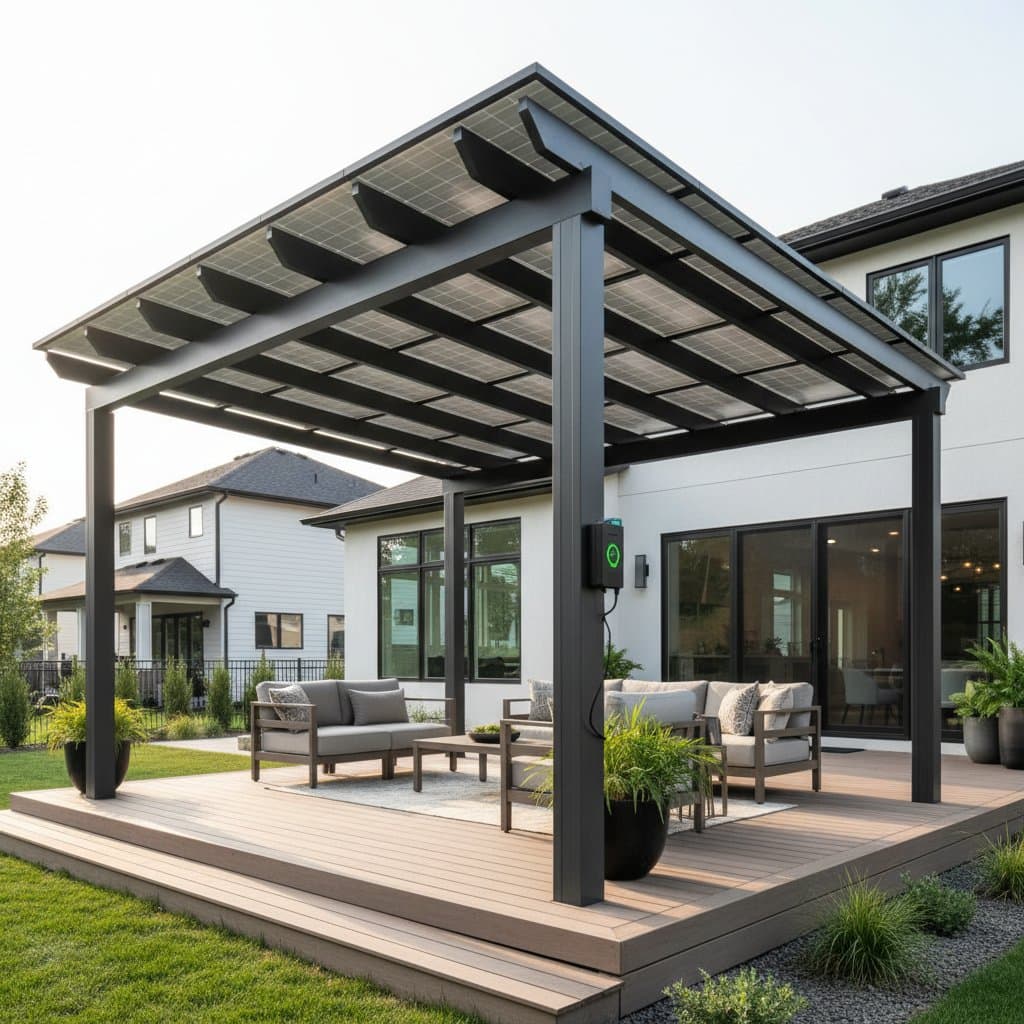Introduction to Solar Pergolas
Solar pergolas represent an innovative fusion of outdoor architecture and renewable energy technology. These structures feature solar panels mounted on a pergola frame, providing shade for rooftop decks while capturing sunlight to produce electricity. In urban settings, where space is limited and sunlight is abundant, solar pergolas enable homeowners to enjoy comfortable outdoor areas without increasing their carbon footprint.
The benefits extend beyond shade and power generation. Property owners can expect reduced electricity bills, enhanced aesthetic value, and compliance with sustainability goals. This guide focuses on the practical aspects of integrating a solar pergola into your rooftop space, from final installation steps to ongoing care, ensuring a seamless blend of functionality and style.
Installation Overview
Before diving into wiring and finishing, ensure the foundational elements are in place. A typical solar pergola installation begins with selecting durable materials like treated wood or powder-coated aluminum for the frame, sized to fit your deck—often 10 by 12 feet for standard rooftops. Secure posts to the deck surface using lag bolts rated for outdoor use, maintaining a slope of at least one inch per foot for water runoff. Position solar panels at a 20- to 30-degree angle facing south for optimal exposure in northern hemispheres.
Once the frame stands firm, connect the panels in series or parallel based on your system's voltage requirements, typically 12 or 24 volts for residential setups. This preparation sets the stage for electrical integration and aesthetic enhancements.
Step 5: Connect Panels to Inverter
Route protective conduit from the solar panels to a weatherproof junction box, ensuring all runs are straight and secured with straps every three feet to prevent movement. From the junction box, extend the conduit to the inverter location. Select an inverter with a capacity matching your panel output, such as 2000 watts for a 10-panel array, and mount it in a shaded, well-ventilated area on the rooftop wall or adjacent to the main electrical panel.
Clearly label all circuit breakers and wiring paths with weather-resistant tags. This organization simplifies future inspections and complies with electrical codes, reducing the risk of errors during maintenance.
Step 6: Seal and Complete the Structure
Apply high-quality roof sealant around every bolt, screw, and conduit penetration to prevent leaks and ensure waterproof integrity. Choose a sealant compatible with your deck material, such as silicone-based for rubber roofs or polyurethane for wood surfaces. After sealing, apply a protective finish to the frame—use exterior-grade paint for metal or penetrating stain for wood—to shield against UV rays, rain, and temperature fluctuations.
Incorporate complementary elements like weather-resistant furniture and low-voltage LED lighting strung along the beams. These additions create an inviting space for relaxation while highlighting the pergola's design at night.
Essential Safety Considerations
Safety forms the cornerstone of any rooftop project. Avoid performing work on surfaces that are wet or covered in ice, as these conditions increase slip risks significantly. For decks elevated more than 10 feet, secure yourself with a full-body harness anchored to a stable point.
All electrical connections must use fittings rated for outdoor exposure, such as IP65 enclosures, to guard against moisture ingress. Calculate and adhere to circuit load limits; use a multimeter to verify voltage and amperage before energizing the system. Engage a licensed electrician for the final grid tie-in to confirm compliance with local regulations and avoid hazards like electrical shocks or fires.
Common Troubleshooting Scenarios
Solar pergolas generally operate reliably, but occasional issues may arise. If output falls short of projections, begin by assessing shading from adjacent buildings or overhanging trees, which can reduce efficiency by up to 30 percent. Prune obstructing foliage or fine-tune panel tilt in increments of five degrees to maximize sunlight capture.
Accumulated dirt, including urban dust and seasonal pollen, often diminishes performance by 10 to 15 percent. Perform cleaning with a soft-bristled brush and lukewarm water mixed with mild, non-detergent soap, rinsing thoroughly to avoid residue. Examine wiring for signs of wear, such as corroded connectors or insulation cracks, and replace damaged components promptly to prevent power loss.
Monitor the inverter for error indicators; a steady green light signals normal operation. A red light or intermittent blinking requires a reset per the manufacturer's instructions—typically powering off for 10 minutes before restarting. Persistent problems warrant a professional diagnostic, which may involve advanced tools like thermal imaging to detect hidden faults.
Cost Analysis and Timeline
Investing in a rooftop solar pergola typically ranges from $4,000 to $9,000, influenced by dimensions, frame material, and panel quality. Wood frames tend toward the lower end, while aluminum with high-efficiency monocrystalline panels pushes costs higher. Professional labor for installation adds $1,000 to $2,500, covering permits, wiring, and structural reinforcements.
A DIY approach suits handy individuals and spans two weekends for a basic wooden setup or four weekends for a steel-framed system with integrated electrics. To manage expenses, source reclaimed lumber that meets structural standards through local inspections. Opt for a compact 8-by-10-foot design initially, allowing future expansions without full replacement. Mid-tier polycrystalline panels offer solid performance for partial energy offsetting at a fraction of premium prices.
Prioritize quality in critical areas: invest in marine-grade fasteners, UV-resistant wiring, and robust sealants. Compromises here can lead to premature failures, escalating long-term costs.
Routine Maintenance Practices
Sustaining a solar pergola requires minimal effort but yields substantial returns in durability and efficiency. Schedule panel cleaning four times annually, employing distilled water and a microfiber cloth to gently remove grime without scratching the glass surface.
Every three months, torque all bolts to manufacturer specifications using a calibrated wrench, preventing loosening from wind or thermal expansion. Conduct an annual review of wiring, searching for frays, discoloration, or rodent damage, and apply dielectric grease to terminals for corrosion protection.
For wooden elements, refresh the protective coating every two to three years with a semi-transparent stain that allows wood to breathe while repelling moisture. Maintain clear drainage paths around post bases by clearing debris quarterly, avoiding water accumulation that fosters rot.
Document each task in a simple maintenance journal, noting dates and observations. This record aids in identifying trends, such as seasonal wear patterns, and facilitates timely interventions.
Seasonal Care Guidelines
Adapting maintenance to weather cycles ensures year-round performance. In spring, address pollen residue on panels promptly and remove any leaf buildup near conduit entries to maintain airflow.
During summer, monitor inverter temperatures, which can exceed 100 degrees Fahrenheit in direct sun; ensure vents remain unobstructed and consider adding a small fan if needed. As fall approaches, clear gutters and test the pergola's drainage slope to confirm water flows away from foundations before storms arrive.
Winter demands gentle snow removal using a soft plastic broom to avoid panel damage; refrain from using metal tools or hot water, which can cause thermal shock or cracks. These proactive steps minimize weather-related disruptions and extend the structure's lifespan.
Indicators for Professional Assistance
Most issues resolve with basic troubleshooting, but certain signs demand expert intervention. Persistent water intrusion around roof penetrations signals failed seals or improper flashing, potentially leading to deck damage.
Inverter malfunctions that do not clear after resets may indicate internal component failure, requiring specialized repair. Noticeable structural movement—more than one inch under moderate wind—suggests foundation or frame instability. Visible rust on multiple metal parts or decay in over two wooden posts points to material degradation needing replacement.
Contact a certified solar or structural specialist promptly in these cases to safeguard investments and ensure code compliance.
Steps to Launch Your Project
Bringing a solar pergola to life starts with precise planning. Measure your rooftop deck accurately, accounting for access points and load-bearing areas, then draft a layout with posts spaced at six-foot centers for stability.
Review municipal building codes for rooftop additions and explore available solar rebates or tax credits, which can offset 20 to 30 percent of costs. Evaluate at least two solar kit options from reputable suppliers, prioritizing those aligned with your daily energy needs—such as 1 to 2 kilowatts for lighting and small appliances.
With preparation complete, proceed to procurement and assembly, transforming your urban oasis into a self-sustaining haven that pays dividends in comfort and savings.







